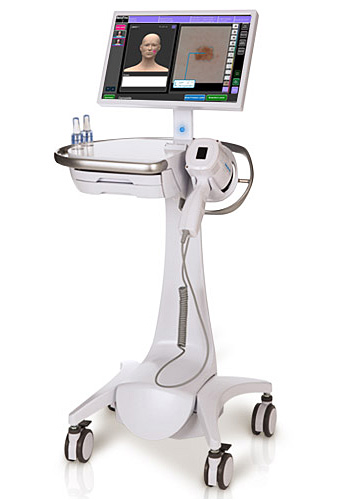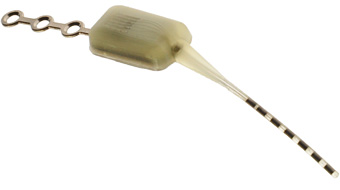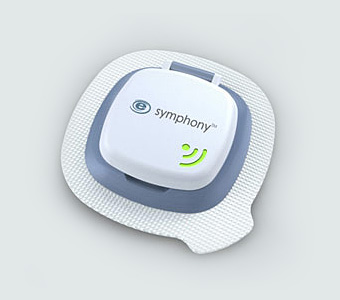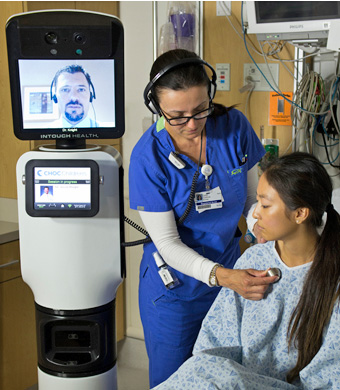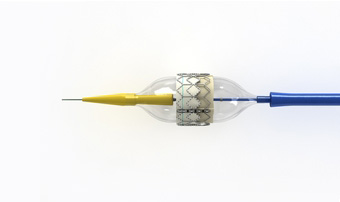Health Tech
Children's cancer wing transformed into superhero ward

Warner Brothers (owner of DC Comics) is also a client of JWT and gave its blessing and a helping hand to the project that features Green Lantern, Batman, Superman, and Wonder Woman. The kids are given custom comic books and animations that show the popular superheroes undergoing similar treatments. The superheroes recover thanks to the "superformula" and continue in their crime-fighting ways.… Read more
Get instant pulse readings with iSpO2 for iPhone, iPad

iSpO2 is a consumer pulse oximeter that connects to most Apple i-devices and comes with a sensor that you slip on to your ring finger for immediate oxygen, pulse rate, and perfusion index readings.
While not intended for home use, the idea behind iSpO2 is to help fitness fanatics, aviators, skiers, and extreme sports enthusiasts find out crucial information on their vitals without the need for a physician. Max Safai, senior vice president of … Read more
Brain implants let paralyzed woman move robot arm

She's become the first to demonstrate that people with a long history of quadriplegia can successfully manipulate a mind-controlled robot arm with seven axes of movement. Earlier experiments had shown that robot arms work with brain implants.
Scheuerman was struck by spinocerebellar degeneration in 1996. A study on the brain-computer interface (BCI) linking Scheuermann to her prosthetic was published online in this month's issue of medical journal The Lancet.
Training on the BCI allowed her to move an arm and manipulate objects for the first time in nine years, surprising researchers.
It took her less than a year to be able to seize a chocolate bar with the arm, after which she declared, "One small nibble for a woman, one giant bite for BCI." Check it out in the video below. … Read more
Hair clip inspires device that clamps down traumatic bleeding

Now the device, due to hit the market in multiple countries later this year, has earned Filips the top innovator award at last week's Life Science and Health Care Ventures Summit in New York.
The ITClamp will "level the playing field for everybody," Filips recently told the Edmonton Journal. (His firm, Innovative Trauma Care, is based … Read more
Early-warning software could reduce false alarms of seizures

The downside is that the tech, still early in development, also produces false positives, causing devices to send currents to the brain when a seizure is not actually occurring. One new approach, developed by a biomedical and electrical engineer at Johns Hopkins University, appears to reduce those false alarms.
Tested on real-time recordings of brain activity in … Read more
Routine mammography's potential harm: Overdiagnosis

It turns out that as many as a quarter of the early cancers detected by mammography would not progress. That suggests early detection results in a great deal of unnecessary treatment and stress, according to a Harvard School of Public Health analysis of a nationwide screening program in Norway.
"Radiologists have been trained to find even the smallest of tumors in a bid to detect as many cancers as possible to be able to cure breast cancer," lead … Read more
Microfluidic chip to quickly diagnose the flu

Today, researchers from Boston University, Harvard, and the Beth Israel Deaconess Medical Center are reporting in the journal PLoS ONE that they have built a microfluidic chip that rivals in accuracy the gold-standard diagnostic test known as RT-PCR but is faster, cheaper, and disposable.
For their four-year study, which involved 146 patients with flu-like symptoms and was funded by the National Institutes … Read more
Living 'gut-on-a-chip' to help study intestinal disorders

These bio-inspired micro devices that mimic the structures, behaviors, and environments of human organs could help scientists better understand the inner workings of a variety of diseases and disorders -- in this case intestinal ones such as Crohn's disease and ulcerative colitis -- without resorting to often less reliable animal testing.
The latest so-called "gut-on-a-chip" is a silicon polymer device whose central … Read more
Paging Dr. iPhone: ThermoDock takes your temperature

The nice thing about infrared is that you don't have to stick the ThermoDock where the sun don't shine. That means your iPhone stays at a safe distance from steaming coffee mugs, people carrying around flu germs, and grumpy children.
This gadget can also be used to check the ambient temperature of your room or the great outdoors. As we like to say here in New Mexico, "It's a dry heat!"… Read more
Hospital alarm system will sound when people light up

The alarm, which is followed by a presumably shaming loudspeaker message to stop breaking the rules, is sensitive enough to be triggered by a single smoker lighting up. A representative of the company that installed the machine said in a hospital statement that its purpose is twofold: to encourage better health and to keep the … Read more












